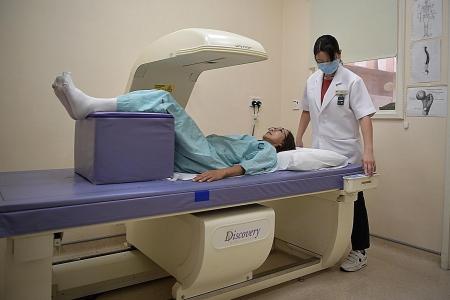Hip fracture rates in Singapore falling
Hip fractures continue to be a concern but the good news is that the incidence rate has declined for both men and women, according to a new study.
It noted that when adjusted for age, fracture rates dropped by 1.4 per cent a year from 2000 to 2017 - a reversal of trends from a previous study that reported an increase in the rate of around 1 per cent to 1.5 per cent a year for both sexes from 1991 to 1998.
Researchers pinned it down to three main reasons: People having greater awareness of the risks and taking preventive measures; a secondary fracture prevention programme that started in public hospitals in 2008; and more availability of osteoporosis medication.
MORE WOMEN AFFECTED
Hip fractures affect disproportionately more women than men as an abrupt oestrogen decline after menopause puts them at greater risk of osteoporosis, which increases the risk of hip fracture by two to three times compared with men.
Other strong risk factors for osteoporosis are older age and lower body mass index.
Height was also discovered by researchers to be linked to osteoporosis. Every 1m increase in height equates to a 0.3 per cent increase in bone mineral density - an indication of osteoporosis - said Professor Yong Eu Leong, a senior consultant at the National University Hospital (NUH) Women's Centre.
The findings were based on a study of more than 36,000 Singapore residents hospitalised for their first hip fracture.
Researchers found the absolute number of cases doubled, from 1,487 in 2000 to 2,729 in 2017, due to population growth and a higher proportion of elderly people.
Chinese women had fracture rates 1.4 times higher than their Malay counterparts, and 1.9 times higher than Indian women.
"The Chinese have very low bone mineral density and therefore have high fracture rates," said Prof Yong, the lead researcher.
But the silver lining is that Chinese women were also the only ethnic group to show a decline in fracture rates.
About 2,500 hip fracture cases occur here every year, a figure projected to increase to 9,000 in 2050 due to the rapidly ageing population. The total immediate hospital cost of these fractures was $14 million in 1998 and is estimated to rise to $112 million by 2050.
"One of the ways to prevent hip fracture is to prevent falls. Older people should be encouraged to exercise to maintain core body strength, so if they slip, they can rebalance themselves," said Prof Yong.
Get The New Paper on your phone with the free TNP app. Download from the Apple App Store or Google Play Store now



